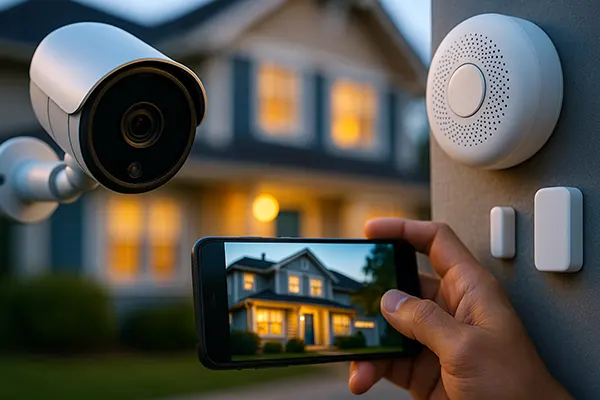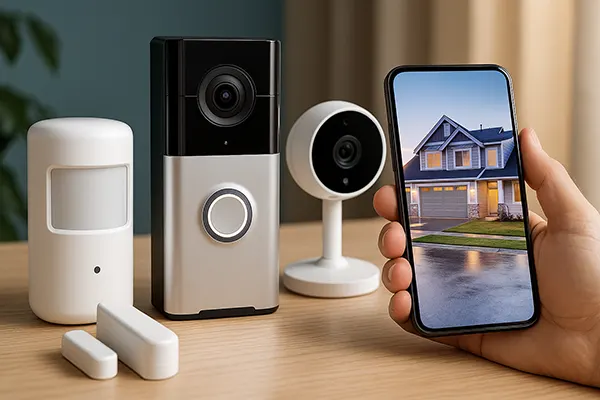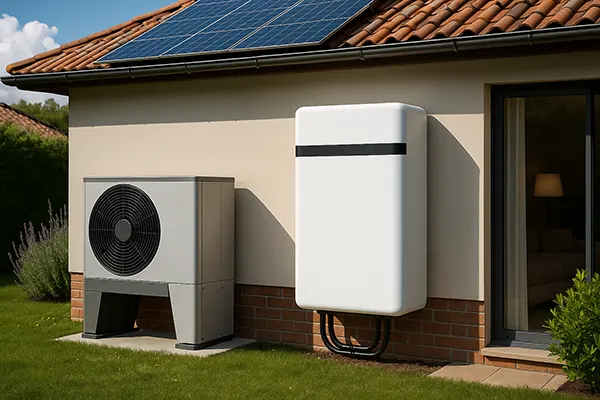
How Artificial Intelligence Transforms Home Security in 2025: Algorithms, Cameras and Smart Sensors
By 2025, artificial intelligence has become a central component of modern home protection systems. Its role is no longer limited to basic motion detection or scheduled alerts. Today’s AI-powered solutions combine real-time analytics, adaptive learning models and interconnected sensing devices, giving homeowners clearer situational awareness and more reliable threat detection. These innovations create an environment where safety relies on evidence-based decisions rather than guesswork.
AI-Driven Algorithms in Modern Home Security
Advanced algorithms in 2025 rely on behaviour-based analysis instead of simple triggers. They examine patterns, differentiate ordinary movements from unusual ones and reduce false alarms caused by pets, shadows or household noise. This shift allows security systems to react with greater precision and relevance to real-world events.
The latest systems learn from continuous data streams. They refine their responses with each interaction, recognising typical household routines and spotting inconsistencies that may indicate attempted intrusion. This adaptive capability allows the system to adjust without manual intervention, providing consistent accuracy over time.
Integrations with cloud-based processing ensure that AI has sufficient computing power to interpret detailed visual, audio and environmental information. This combination results in faster decisions, secure remote access and stronger protection across diverse living environments.
Machine Learning Models Enhancing Threat Detection
Machine learning models filter complex data and identify patterns that earlier systems were unable to distinguish. For example, algorithms can differentiate a delivery worker approaching the entrance from a person attempting to conceal their identity. This level of detail helps homeowners respond appropriately to each situation without unnecessary panic.
Another improvement is predictive analysis. By observing repeated behaviour near entry points, these models highlight potential risks before an incident occurs. This supports preventive action, such as adjusting lighting schedules or sending alerts about unfamiliar individuals lingering near the property.
Continuous model updates provide ongoing improvements. These updates incorporate new datasets, attack methods and environmental conditions, ensuring that detection remains effective as threats evolve.
Next-Generation Smart Cameras
By 2025, smart cameras have progressed well beyond basic video recording. Many feature integrated AI processors capable of analysing footage locally, reducing reliance on external servers and improving privacy. Cameras identify specific objects such as vehicles, faces or animals with high precision, limiting incorrect notifications.
Technologies such as HDR night vision and multi-angle imaging give a clearer view in low-light environments, making it easier to distinguish between harmless and suspicious activity. Cameras also synchronise with microphones and smart locks to create a unified response to detected events.
Improved data security ensures encrypted storage and transmission, helping homeowners maintain control over sensitive footage. Transparent data-handling policies in modern systems enhance trust and align with contemporary privacy standards.
AI-Supported Image and Audio Analysis
Image recognition now identifies not just shapes but the context of actions. For example, a camera can recognise when someone is attempting to tamper with a door rather than simply standing near it. This context-based approach results in timely warnings that are genuinely useful.
Audio analysis has also matured. Algorithms can categorise sounds such as broken glass, forced entry attempts, or raised voices during a disturbance. These capabilities offer a multi-layered understanding of events, combining both visual and audible cues for a complete picture.
Cross-referencing audio and video allows systems to confirm threats with higher accuracy. This reduces unnecessary alerts and focuses attention on events that require immediate attention.

Smart Sensors and Integrated Home Monitoring
Smart sensors in 2025 monitor far more than motion. They track vibration, temperature shifts, unauthorised window openings and even subtle pressure changes inside the house. By correlating these measurements, AI systems can identify unusual activity that might indicate forced entry or internal hazards.
Wireless connectivity enables sensors to collaborate, forming a distributed network that covers the entire property. Each device contributes to a shared understanding of the environment, strengthening overall reliability and resilience against tampering.
These systems also support environmental safety. Sensors detect smoke, carbon monoxide, leaks and electrical anomalies, giving households early warnings that reduce potential damage and risk. This makes modern security solutions valuable for both crime prevention and everyday hazard monitoring.
Real-Time Data Fusion for Better Decision-Making
Data fusion brings together inputs from cameras, microphones and sensors, allowing AI to analyse them as a single event rather than isolated signals. This combined approach ensures that alerts are issued only when multiple indicators align, improving trust in system accuracy.
Real-time processing helps households respond promptly. Notifications include detailed context, such as the exact location, type of activity and recommended actions. This information supports clear decision-making even when the homeowner is away.
As systems continue to evolve, real-time fusion will form the backbone of home protection, enabling more sophisticated prevention tools and giving households a transparent view of their security status.
Popular articles
-
 Next-Generation Home Batteries: Hybrid Ene...
Next-Generation Home Batteries: Hybrid Ene...Hybrid home batteries have become a practical foundation for residential energy autonomy …
Learn more -
 How Artificial Intelligence Transforms Hom...
How Artificial Intelligence Transforms Hom...By 2025, artificial intelligence has become a central component of modern home …
Learn more -
 How to transfer a site to another hosting?
How to transfer a site to another hosting?The Internet is a great place to grow your business, which is …
Learn more
